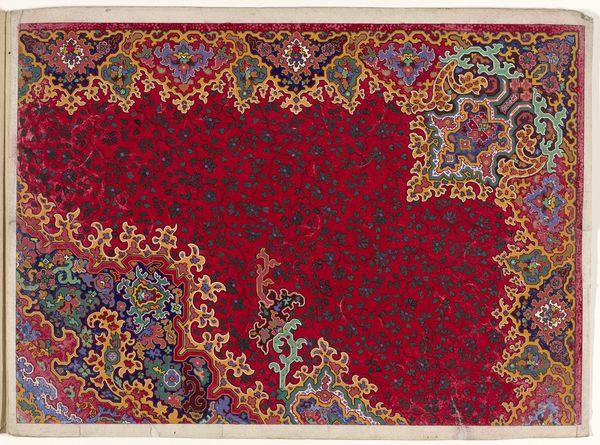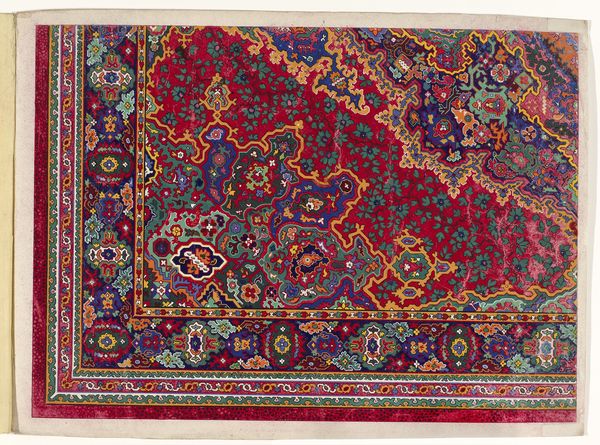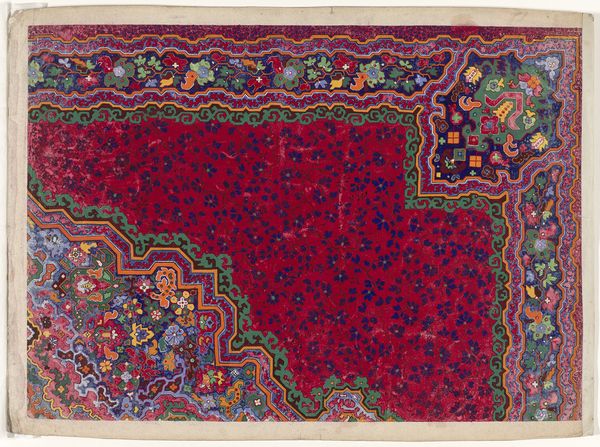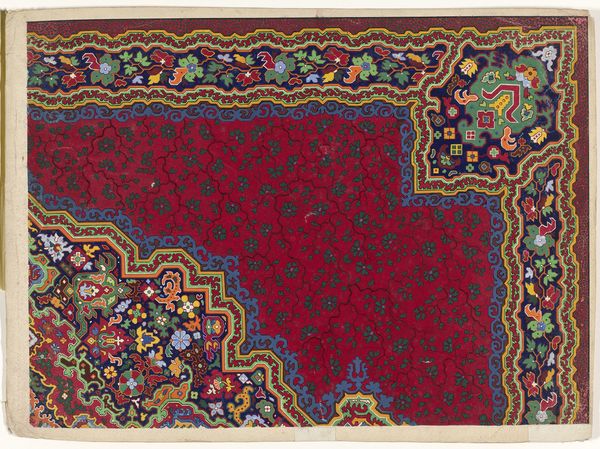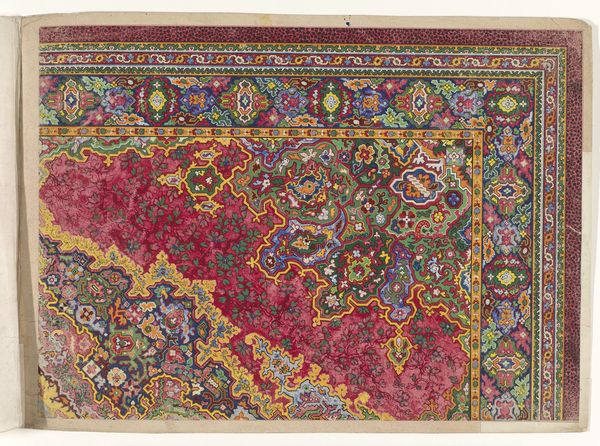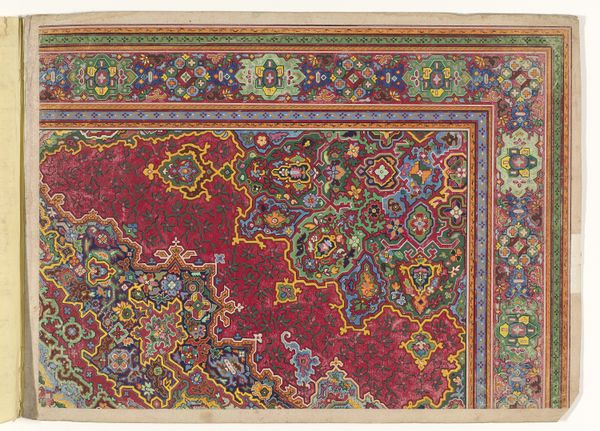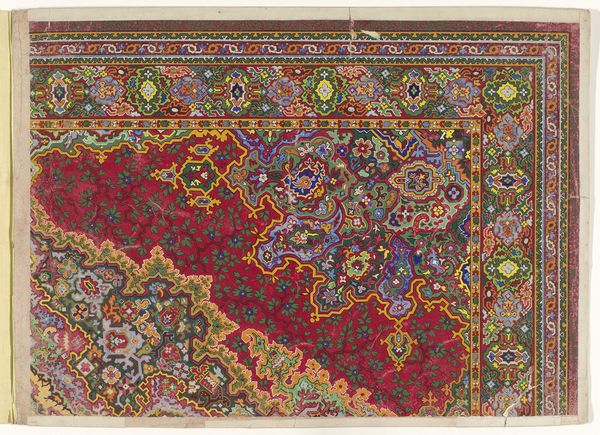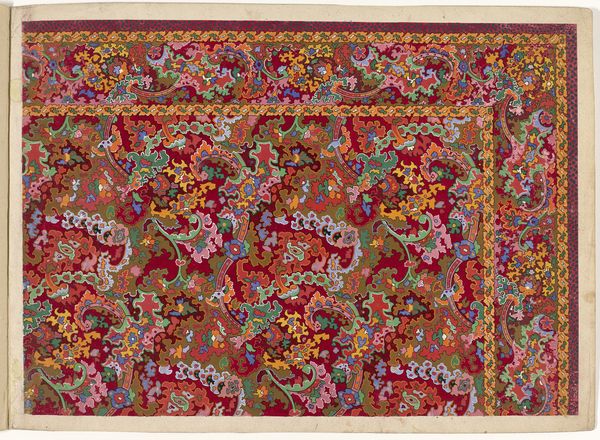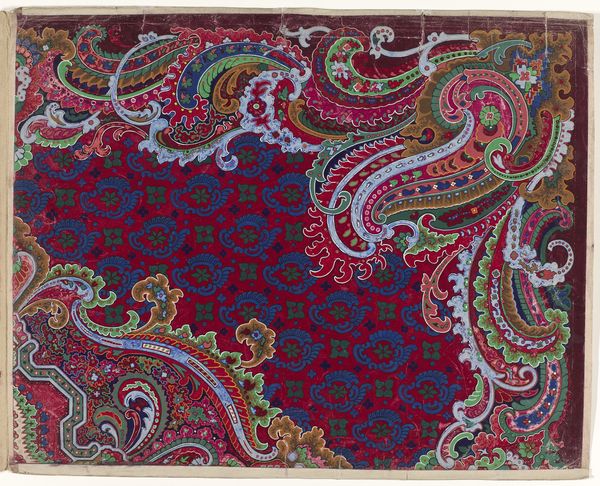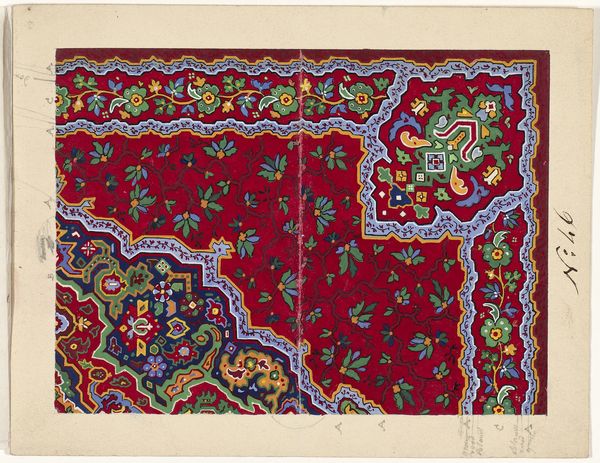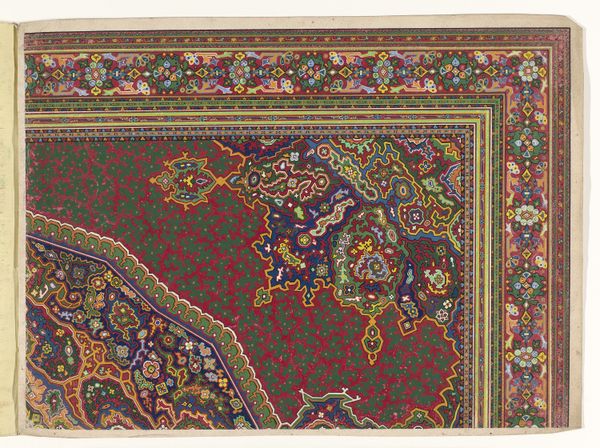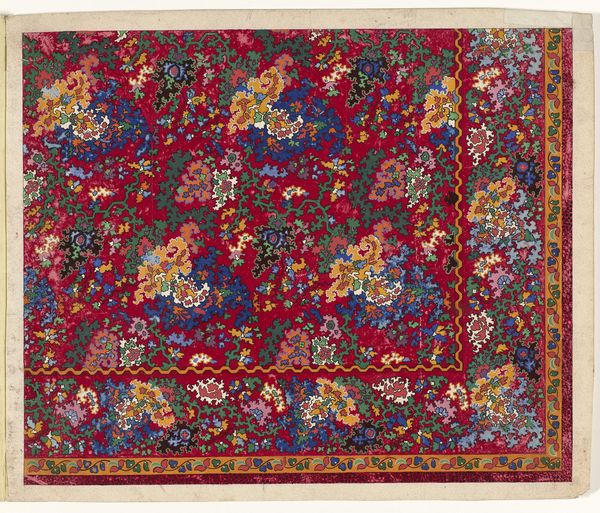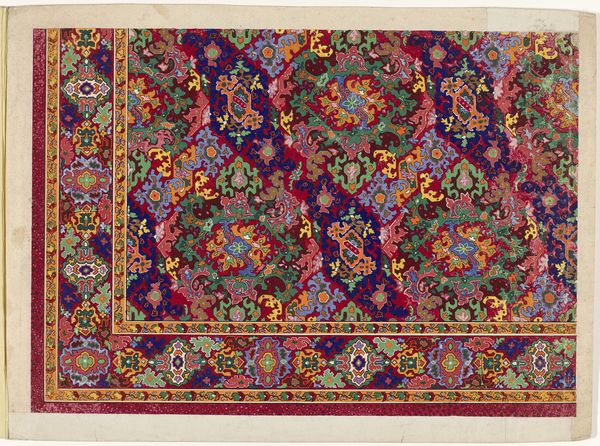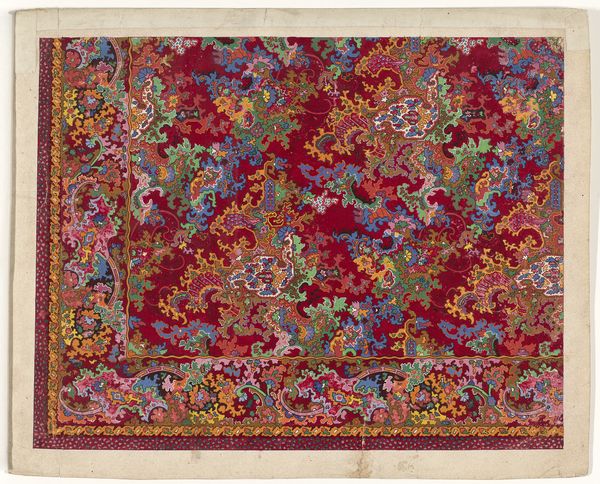
drawing, gouache, paper
#
drawing
#
natural stone pattern
#
naturalistic pattern
#
gouache
#
paper
#
geometric pattern
#
pattern background
#
abstract pattern
#
organic pattern
#
flower pattern
#
repetition of pattern
#
pattern repetition
#
layered pattern
Dimensions: height 302 mm, width 418 mm
Copyright: Rijks Museum: Open Domain
Curator: Immediately, I see opulent indulgence. The mixed media work titled "Ontwerp voor een tapijt," or "Design for a Carpet," was crafted anonymously sometime between 1854 and 1864. What's striking to you? Editor: The dominance of that saturated red overwhelms me. It pulsates, nearly obscuring the intricacies of the geometric and floral designs bordering it. There’s an almost claustrophobic layering of pattern upon pattern. Curator: Exactly! Consider the sociopolitical climate during the rise of Orientalism. This design reflects a European fascination with Middle Eastern and Asian aesthetics, fueled by colonialism and exoticism. The repeating patterns symbolize the desire to categorize and possess these "foreign" cultures. Editor: I see it. It's a visual manifestation of power. The tight, interlocking shapes appear less celebratory and more about control, as though pinning down something that can't be contained. Look at how the eye struggles to find a point of rest within this riot of color and detail. Curator: That unrest is further complicated. This design would've entered circulation—transformed through production into an actual object—in upper-class European households, reinforcing social hierarchies both at home and abroad. The materiality, too, dictated accessibility; for many, it could be appreciated only visually in the domestic sphere. Editor: There's definitely a tension between artistry and application here. The complex motifs and colors would create tactile intrigue as a physical carpet, yet that same intensity of form suggests visual restriction. This conflict creates the disquieting affect this carpet produces. Curator: Well put. It shows how an artwork ostensibly created for domestic enjoyment subtly promoted larger socio-political projects of its time. Editor: Absolutely, and viewing its composition through that framework adds a layer of complexity beyond mere surface beauty.
Comments
No comments
Be the first to comment and join the conversation on the ultimate creative platform.
